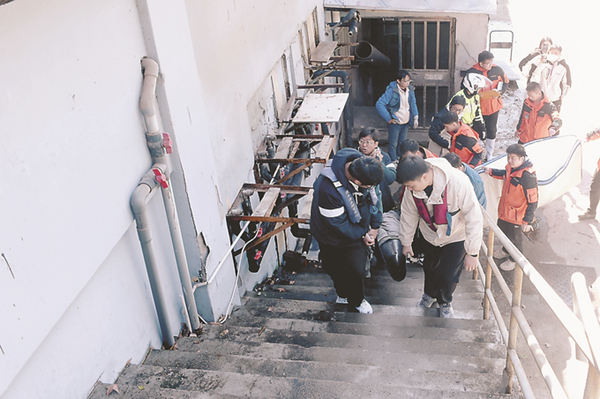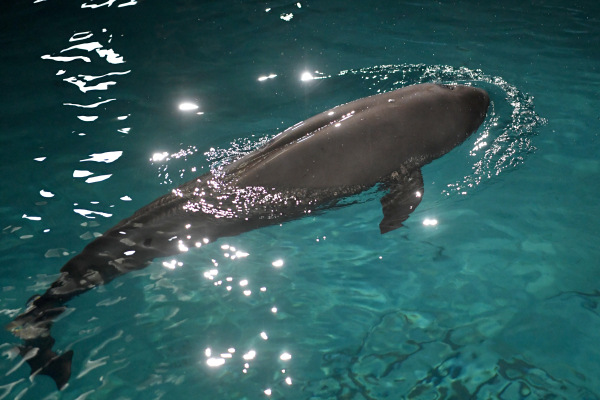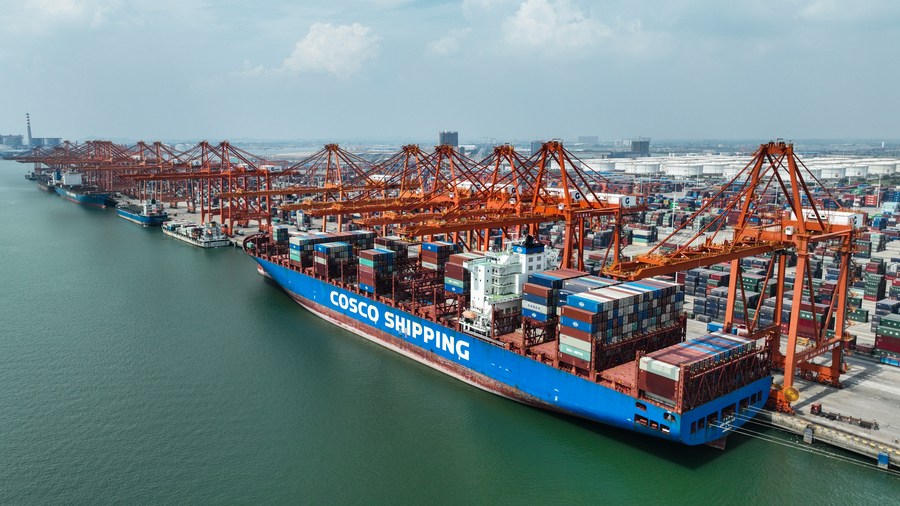
Rescuers transfer the injured Yangtze finless porpoise to safety. (Photo by Wu Jun/Xinhua Daily)
Over 50 rescuers in Nanjing have raced against time to search and rescue an injured Yangtze finless porpoise, and successfully transported it to Nanjing Andover Under Water World for treatment on February 16, marking China’s first successful rescue of the critically endangered species in the Yangtze River basin.
The porpoise, known as the "giant panda of the water," is a barometer of the ecological environment in the basin.
Liu Kai, a researcher at the Freshwater Fisheries Research Center (FFRC) of Chinese Academy of Fishery Sciences (CAFS), said the injured porpoise measures 131 centimeters in length, weighs 37 kilograms, and is approximately 5 years old. It was found with a 5-6 centimeter laceration on its tail fluke, caused by entanglement with aquatic plants and debris.
Upon its arrival at the aquarium, the porpoise underwent cleaning, anti-inflammatory treatment and sterilization.”Amino acids and ointments are used to boost the porpoise’s energy levels and wound healing,” said Chen Dajun, lab director at the aquarium’s freshwater species department.
Further diagnostics, including ultrasound and X-ray, revealed the lung infection, a life-threatening disease among cetaceans, according to Liu. “IV drips and medication are among common treatment methods and one session caould take a month,” Liu added.

The injured Yangtze finless porpoise is recovering in a temporary pool in Nanjing, February 17, 2024. (Photo by Wu Jun/Xinhua Daily)
The porpoise initially caught the attention of photography enthusiasts and locals on February 11. Subsequently, the Nanjing Management Station of the Yangtze River Finless Porpoise Nature Reserve sent teams to monitor its movement both in the river and on the shore.
As more clear photos were available, experts convened online to discuss the rescue effort. Professor Chen Bingyao from the School of Life Sciences, Nanjing Normal University emphasized the urgency of intervention, noting that it’s basically impossible for the wound to heal itself.
Chen also explained the critical role of the tail fluke in maintaining balance and mobility in water and how entanglement or injury could severely impact the porpoise’s survival.
Despite the challenges posed by the open water, including fast currents and frequent passing ships, favorable weather conditions on the morning of February 16 improved visibility. Six scientific research and monitoring vessels were mobilized to support the rescue mission, which lasted for one hour.
“In Nanjing, citizens love porpoises and pay attention to their wellbeing, so this porpoise can be found quickly,” said Liu. By February 17, the porpoise was able to swim normally in a temporary pool after preliminary treatment.
Currently, Nanjing is China's only major city where the downtown river course remains a stable habitat of Yangtze finless porpoises. The Nanjing section of the Yangtze River is currently home to 62 finless porpoises.








